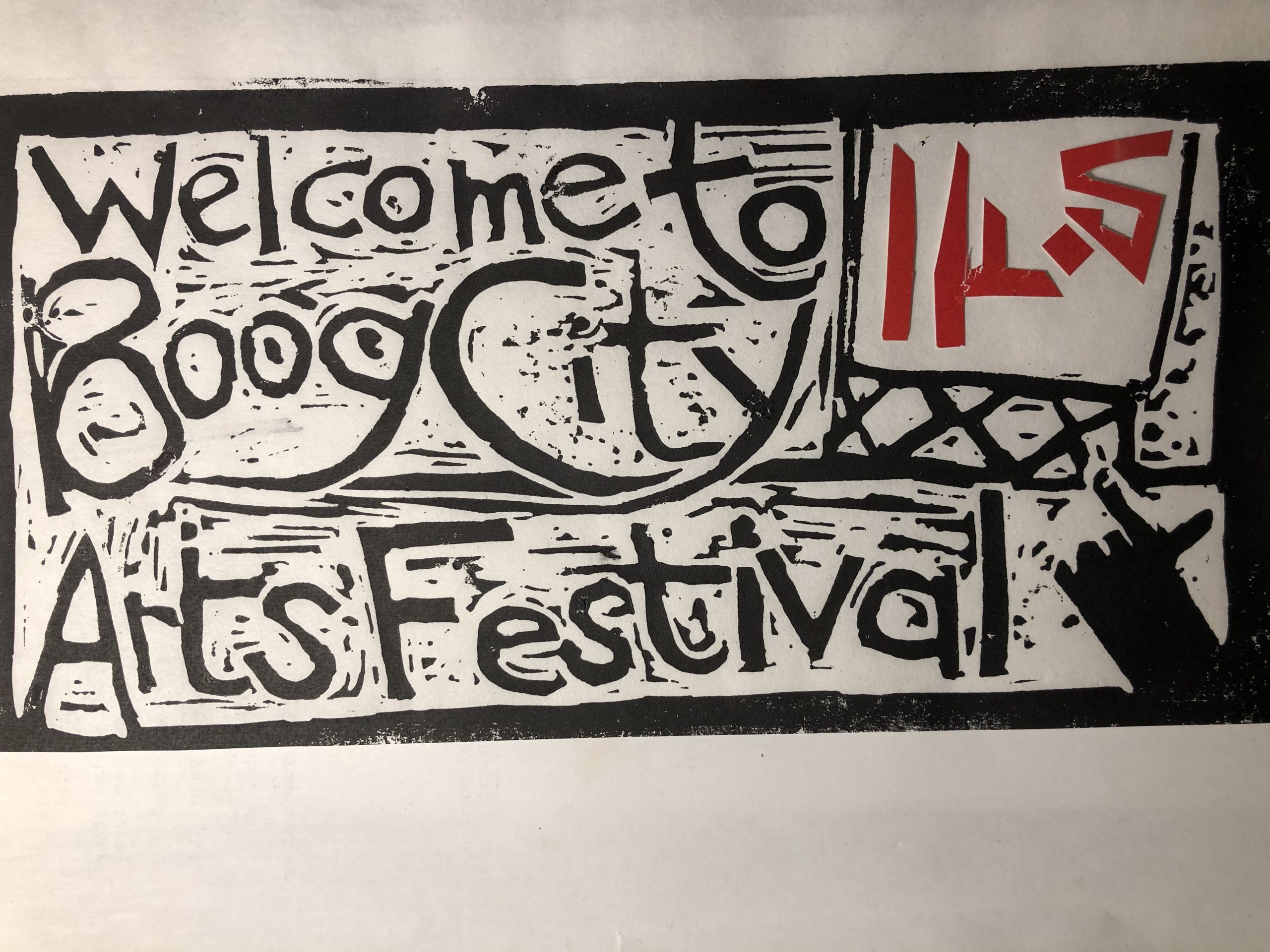by Joe Elliot
A Poetics of the Press: Interviews with Poets, Printers, & Publishers
Edited by Kyle Schlesinger
Ugly Duckling Presse
A Poetics of the Press, a collection of interviews with 16 independent publishers who are also poets and/or printers, updates the Modernist dictum of “No ideas but in things” to “No poetry but in poets.” Or, as Johanna Drucker puts it, in describing a scene from her novel Poetry Wars, “when Dawn … meets another major figure named Will, the narrator says, ‘You don’t meet poetry. You meet poets.’ I don’t think you can separate ideas from individual characters, personalities, beliefs.” On the one hand, if you want to know about the individual poet, read the poems. It’s all there. Ann Lauterbach once said that a poet’s life is their poems. The biographies and critical studies, the jobs and apartments and grants and heartbreaks, are just a sideline. On the other hand, poetry is more than this individual pursuit.
It’s the “visionary company of love,” to borrow a phrase from Hart Crane, and this book makes abundantly clear that its transmission and growth happens between poets and printers and artists and publishers, this company of cultural workers who enter a “broken world” and make it whole again, turning it into a life-giving scene, however fleeting. Or, as Steve Clay puts it, in his interview with Kyle Schlesinger, the engaging conductor and editor of these delightful interviews, in describing his own debt to Sherman Paul, a professor who mentored Clay:
He sent you back to the historical texts, urged you to go back to the special collections … and seeing the diversity of ways they were made, from the production to the distribution … Then you get the whole social, cultural milieu: the bookstores, the magazines, the mailings, the readings, everything. It’s all right there. Independent publishing and the kind of writing we’re interested in, it’s all of a piece … It’s kind of unfair to lop off a hunk of writing for The Collected Poems of Paul Blackburn, and say, ‘Hey, here’s Blackburn.’ That’s really not the whole picture.
It seems to me that the great value of this book of interviews, which allows us to “meet” so many terrific and inspired publisher-poet-printers, is that we get to see how real and concrete this “visionary company of love” is; how it involves marriages and babies and friendships and introductions and mentors and jobs and collaborations; and setting type and adjusting rollers and repurposing paper and handing out chapbooks; and setting up shop in a disused but still odorous stable and sitting at the Ear Inn about a foot away from Jackson Mac Low; who is wearing a brown wool hat and reading the French Sonnets (whose production history is detailed in Schlesinger’s interview with Charles Alexander); and then Hannah Weiner, who is sitting to your right says, “Jackson, can you read that one backwards?” and without missing a beat, Mac Low commences to read in reverse.
This collection illuminates the collective face of poetry, so that by the end of the book we begin to suspect that this company is at least as true a unit of the art as is the individual poet. In addition, and by extension, if the idea cannot be separated from the image, and the poem cannot be separated from the poet, and the poet cannot be separated from their “whole social cultural milieu,” then, as A Poetics of the Press argues again and again, we cannot separate the text from the physical embodiment of the book.
I love the moment in her interview when Annabel Lee is foraging through Gem, a famous downtown clearinghouse, for available off-cuts. I love how Ugly Duckling’s magazine, 6×6, is always bound with a thick rubber band. I love the moment when Lyn Hejinian is setting type for her Tuumba books after dinner with her children. I love how, at the end of his interview, Charles Alexander says, “… let’s not forget the tactile. I’m interested in … the way that the book feels. Somebody will probably come in someday and find me lovingly running hands over the type.” And I love how printer and publisher Aaron Cohick rousingly concludes his interview: “Print is only dead if we try to freeze it in time. We can let the things we love, the things that help us draw meaning from our lives, gather dust in the museums, safe and dead, or we can take them out into the world and see what they look like in the crazy, crashing sunlight.” Apparently, poetry, rebirthed by this visionary company and embodied in the book, can go out into the world to do its work.
One aspect of this work is recruitment. When you are called to join the visionary company, there is always a weird (whose root means fateful) way it happens. And this book is definitely about origins, about how publishers start their presses, how they fall in love with letterpress, how they find other poets, how they come into their own as book makers. Three favorite stories from this book. Alaistair Johnston, of Poltroon Press, describes one such big moment:
One day cleaning up in the attic I found a box of books and opened it: they were all the early Jargon Press books which McNally had printed in Charlotte. Take any you want, he said. It was an epiphany for me. I had set my name in large Weiss italic and thought about printing my poems, but just one copy, to see it in print. These Jargon books showed a vision, determination, and real skill in making something tangible out of something so personal. I studied The Darkness Surrounds Us (1960), Gilbert Sorrentino’s first book: it had a title from Creeley, a cover by Fielding Dawson. It was a small package of magic.
Poetry, especially in these embodied forms, is life changing; it grabs hold of the individual cultural worker and transforms them, empowering them with its vision, giving them the wherewithal to grow and serve poetry. It is important to point out that Johnston’s initial discovery is also a discovery of names; and those names lead to the discovery of more names, and so on. Thus, the young poetry puppy is sent on their way. Schlesinger himself, early in his interview with the Waldrops, reveals that as “a kid growing up outside Providence, Burning Deck did much to inform my sense of what contemporary poetry could be. Your books were in every shop and I bought them whenever I could because I thought you had such terrific taste. I thought, ‘If the Waldrops think it’s worth publishing, it must be worth reading.’”
It is interesting to consider how this “random” method of individual development, browsing through provincial used bookstores, shows how poetry is a resilient and all-creative power, and will find ways to bring people together, form a company, stir up love. But my favorite has to be Steve Clay’s story:
After Naropa my then-girlfriend and I drove to Chicago with a U-Haul full of books, where we intended to start a bookstore. I spent every penny I had on books for an imagined bookstore. We were in Chicago for a while, but it didn’t seem quite feasible, so we moved to Minneapolis where I lived for about eight years, and did start a bookstore.
The image of this inspired but somewhat guileless young lover of POETRY and ALL its MANIFESTATIONS wandering around the Midwest in pursuit of his “imagined bookstore” has Grail-ish overtones. These interviews make plain that these featured publisher/poets, whatever their circumstances, have been called to serve and this service requires sacrifices (the least of which is money) they don’t even know they are making because they are so eager in the pursuit.
The repetition of names from interview to interview suggests that this company, this diverse and anarchically organized web of cultural workers, does have some hubs. Jonathan William, of The Jargon Society, is one such center; Walter Hamady, who taught book arts at Madison, is another. Mairy Laird, of Quelquefois Press, on the “embodied” way these hubs work: “When I was almost nineteen, I met a wonderful bookmaker named Walter Hamady who set type and wrote beautiful poems and I fell in love. He was also a professor; I was his student. We got married. I learned how to make books, to make paper. I learned so many things. I grew up. We had three children. We printed ninety-three editions of books together over 15 years. We had differences, but my interests remained: I was still seeking vastness, space … the capacity of the human soul to encompass unspeakable things, great, glorious and all-encompassing. Eventually I got divorced and went to graduate school.”
The repetition of the word “we,” the breathlessness of the short sentences, the babies turning into books, say more than I can about how you don’t meet poetry, you meet poets; how this encounter with books and the embodied company from which they issue can inspire further issuance.
There are so many more beautiful moments in the interviews I would like to relate, but alas, space forbids. Thank you Kyle Schlesinger for your love of poetry and all manner of book making and theory, for asking such informed and publisher-specific questions, and for giving back this book to the source of books. And thank you Ugly Duckling for supporting Kyle and publishing this project, and for all your smart-alecky and faux-amateurish ways, ways that prove the Truth of Mutual Aid and the Reality of Love.
 JOE ELLIOT ran a weekly reading series at Biblios Bookstore and the Zinc Bar in New York City for many years. He co-edited two chapbook series: A Musty Bone and Situations, and is the author of numerous chapbooks of his own, including You Gotta Go In It’s the Big Game, Poems to be Centered on Much Much Larger Pieces of Paper, 15 Clanking Radiators, 14 Knots, Reduced, Half Gross (a collaboration with artist John Koos), and Object Lesson (a collaboration with artist Richard O’Russa). Granary Books published If It Rained Here (a collaboration with artist Julie Harrison). His long poem, 101 Designs for the World Trade Center, was published by Faux Press as an e-book in 2003. Collections of his work include Opposable Thumb (subpress), Homework (Lunar Chandelier Press), and Idea for a B Movie (Free Scholars Press). For many years, Joe made a living as a letterpress printer. He now teaches English at Edward R. Murrow High School, and lives in Brooklyn with his family.
JOE ELLIOT ran a weekly reading series at Biblios Bookstore and the Zinc Bar in New York City for many years. He co-edited two chapbook series: A Musty Bone and Situations, and is the author of numerous chapbooks of his own, including You Gotta Go In It’s the Big Game, Poems to be Centered on Much Much Larger Pieces of Paper, 15 Clanking Radiators, 14 Knots, Reduced, Half Gross (a collaboration with artist John Koos), and Object Lesson (a collaboration with artist Richard O’Russa). Granary Books published If It Rained Here (a collaboration with artist Julie Harrison). His long poem, 101 Designs for the World Trade Center, was published by Faux Press as an e-book in 2003. Collections of his work include Opposable Thumb (subpress), Homework (Lunar Chandelier Press), and Idea for a B Movie (Free Scholars Press). For many years, Joe made a living as a letterpress printer. He now teaches English at Edward R. Murrow High School, and lives in Brooklyn with his family.

